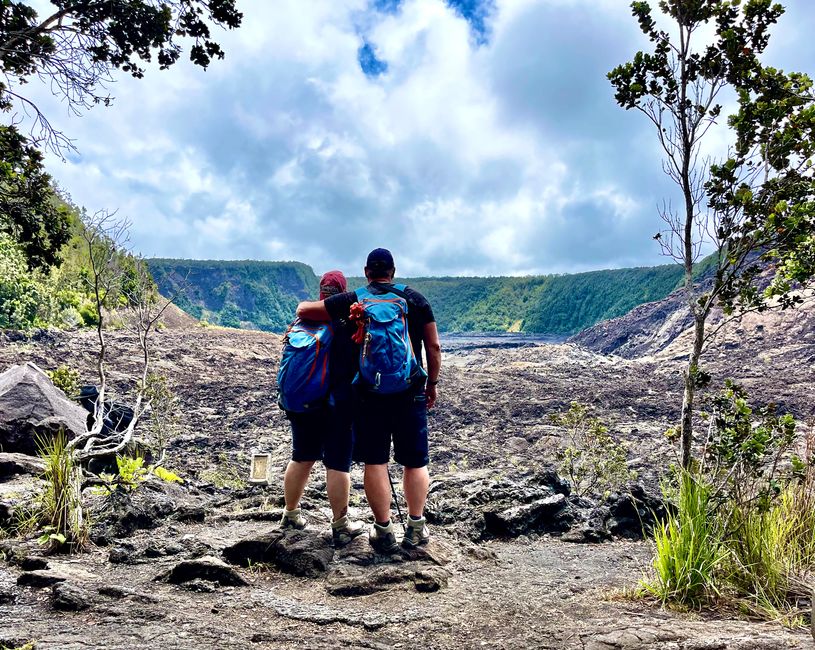
Schahaatz und Ich endlich wieder weg….
vakantio.de/cacawa2023
Refuge Of Love
ପ୍ରକାଶିତ |: 26.08.2023
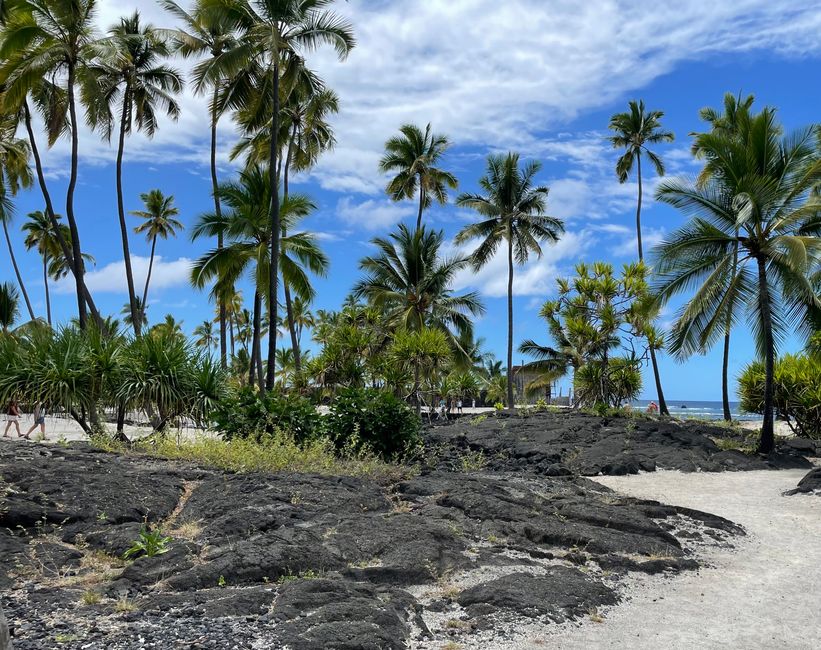
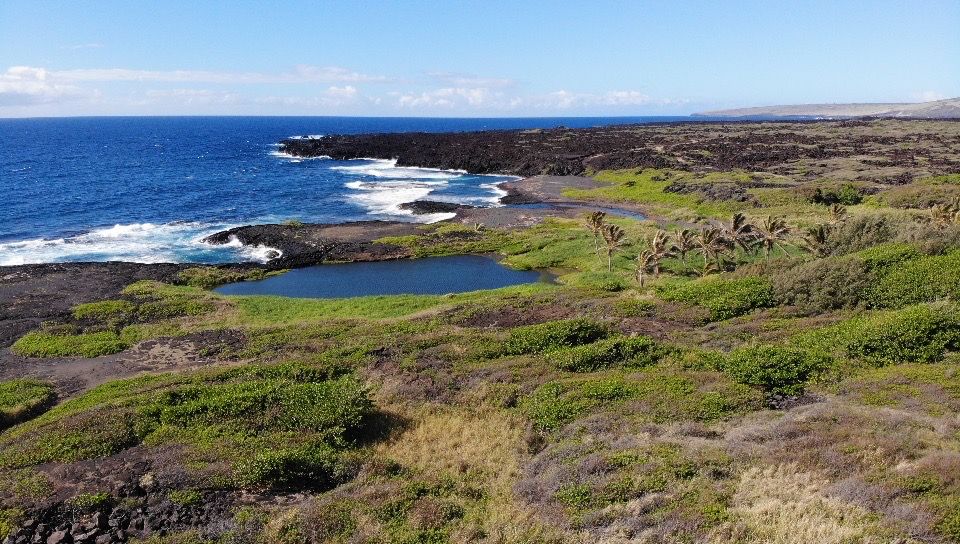
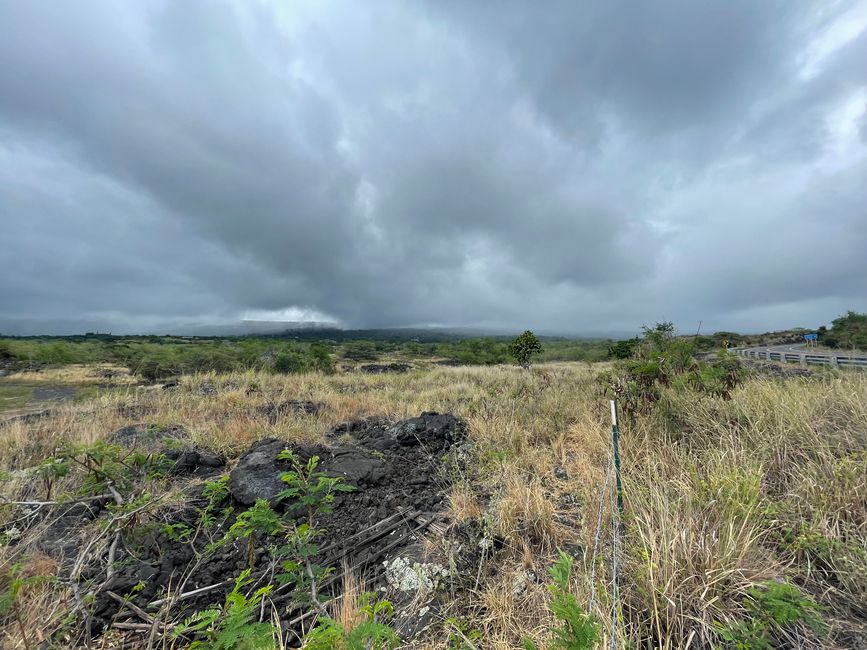
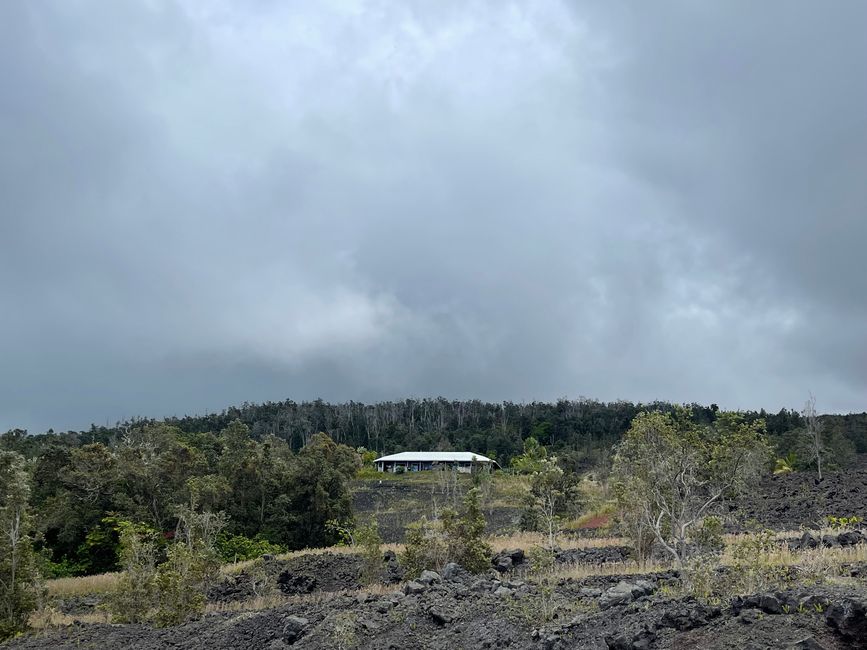
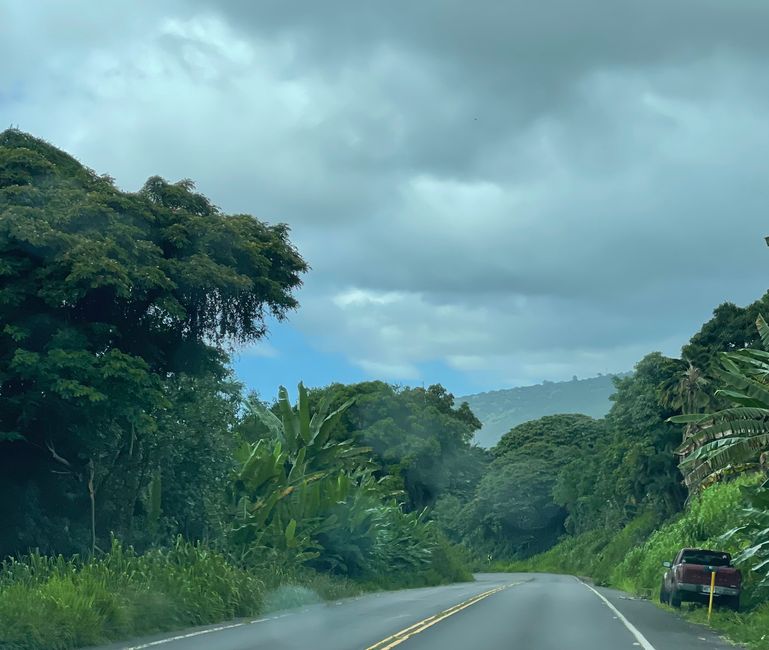
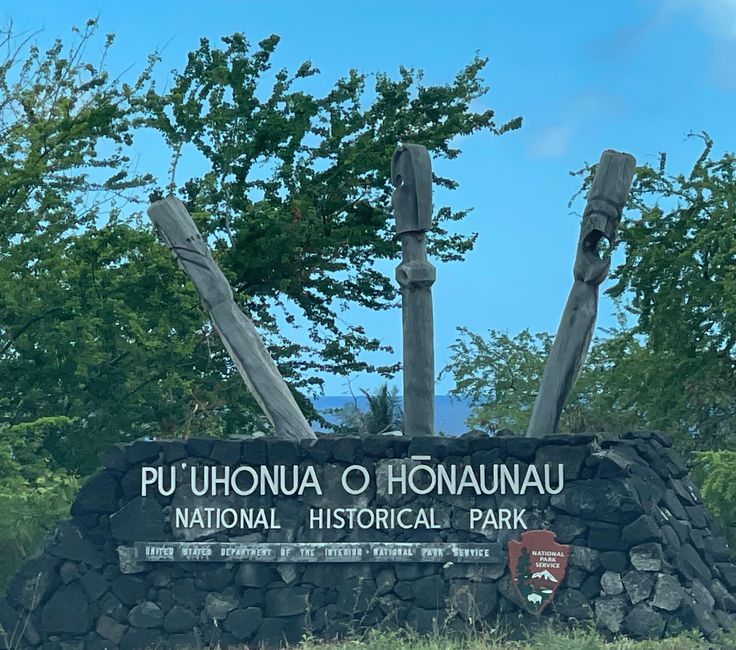
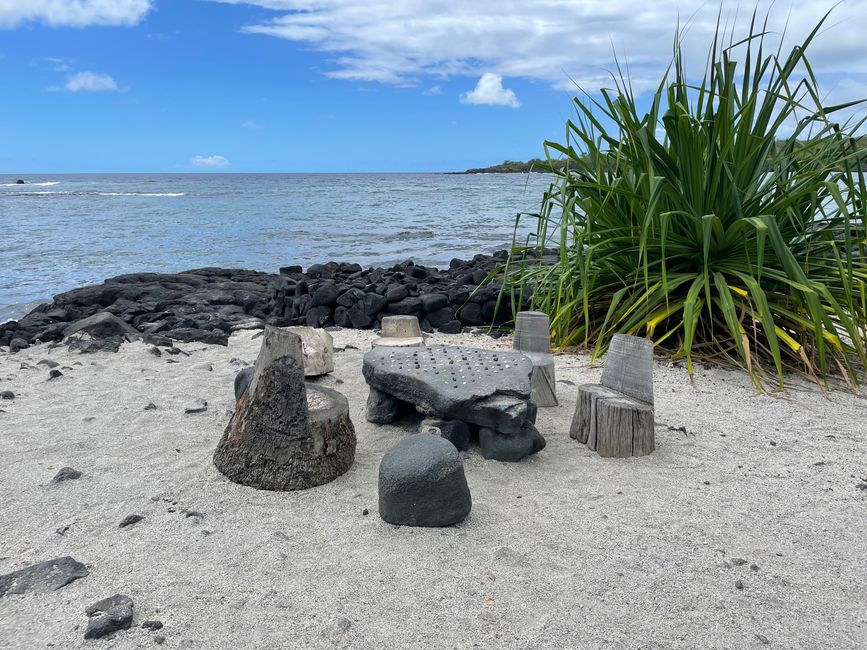
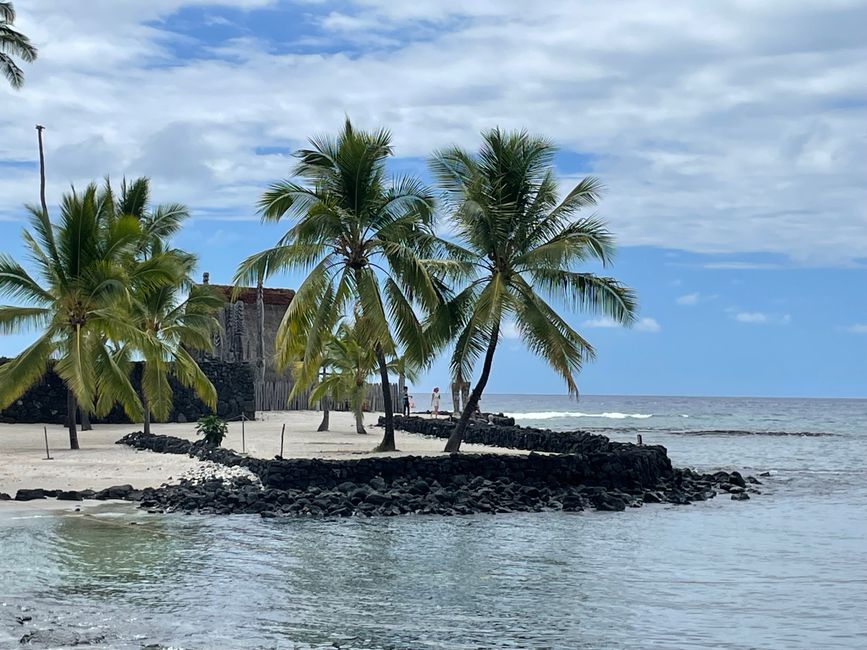
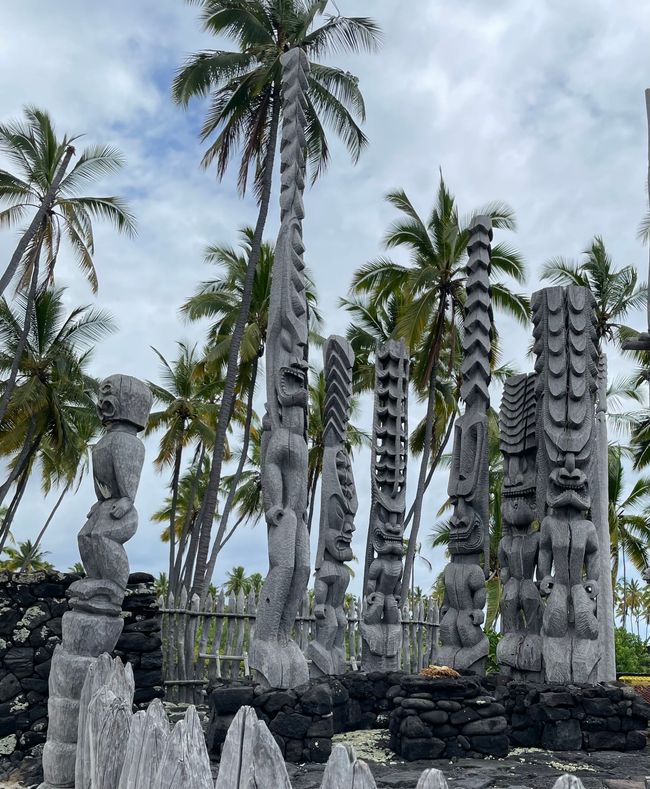
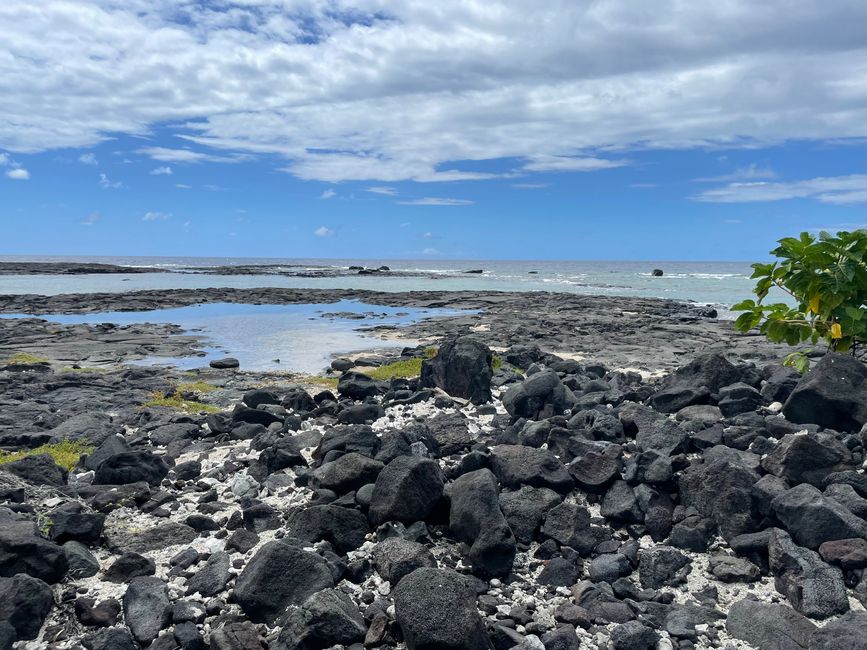
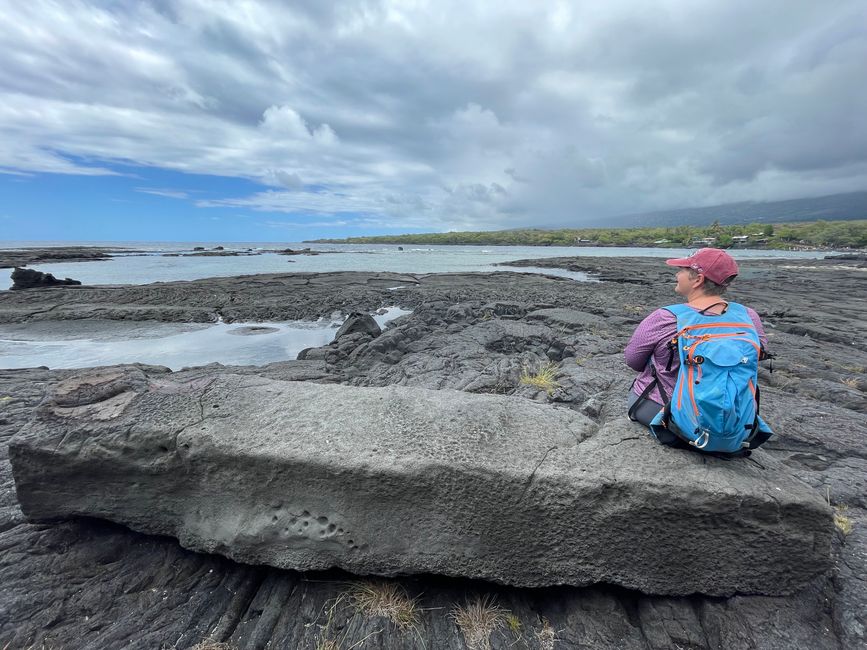
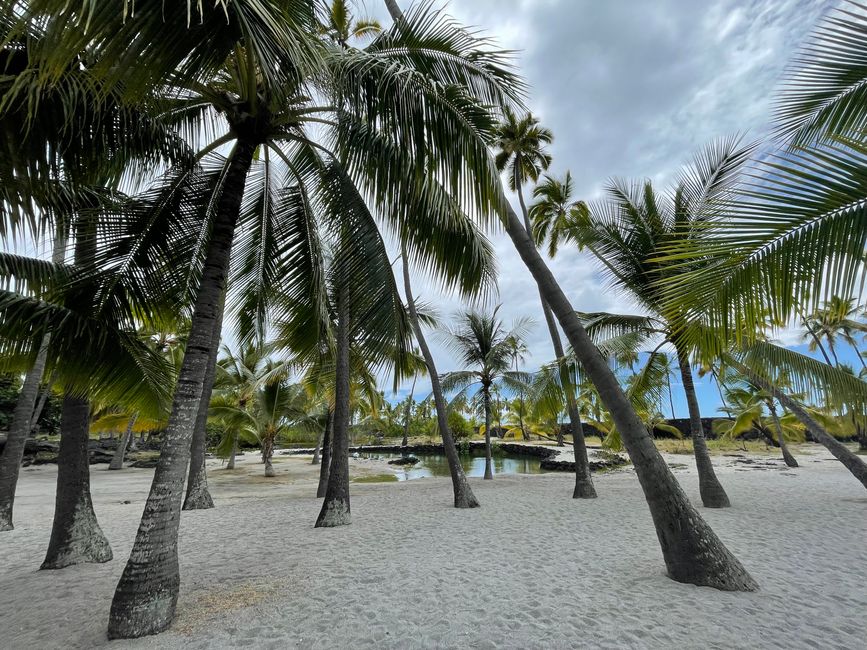
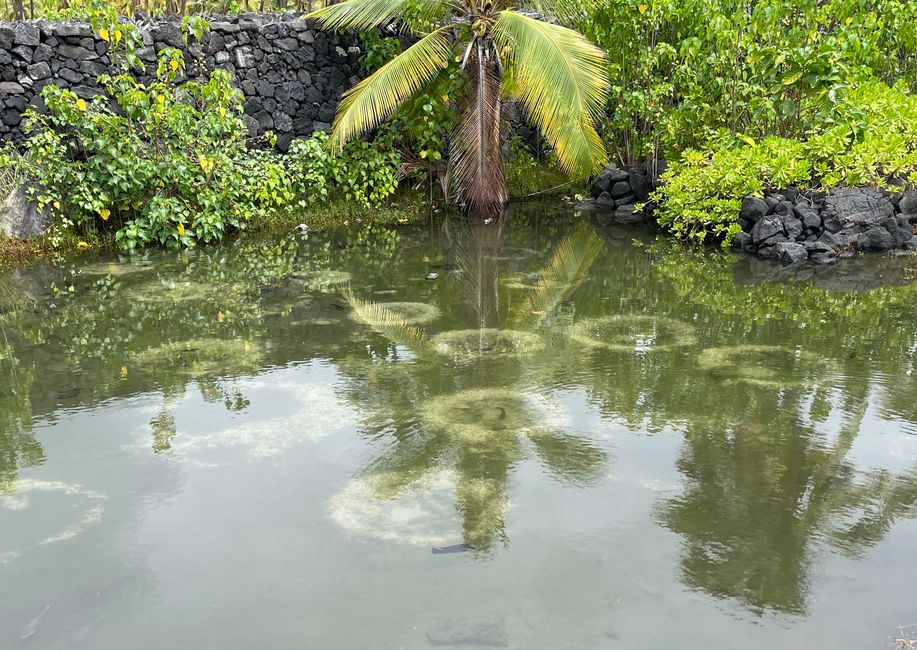
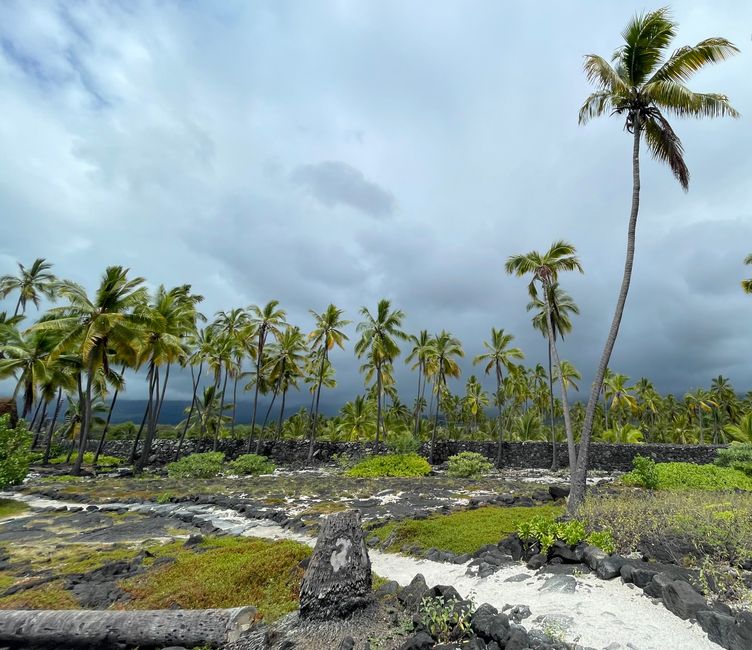
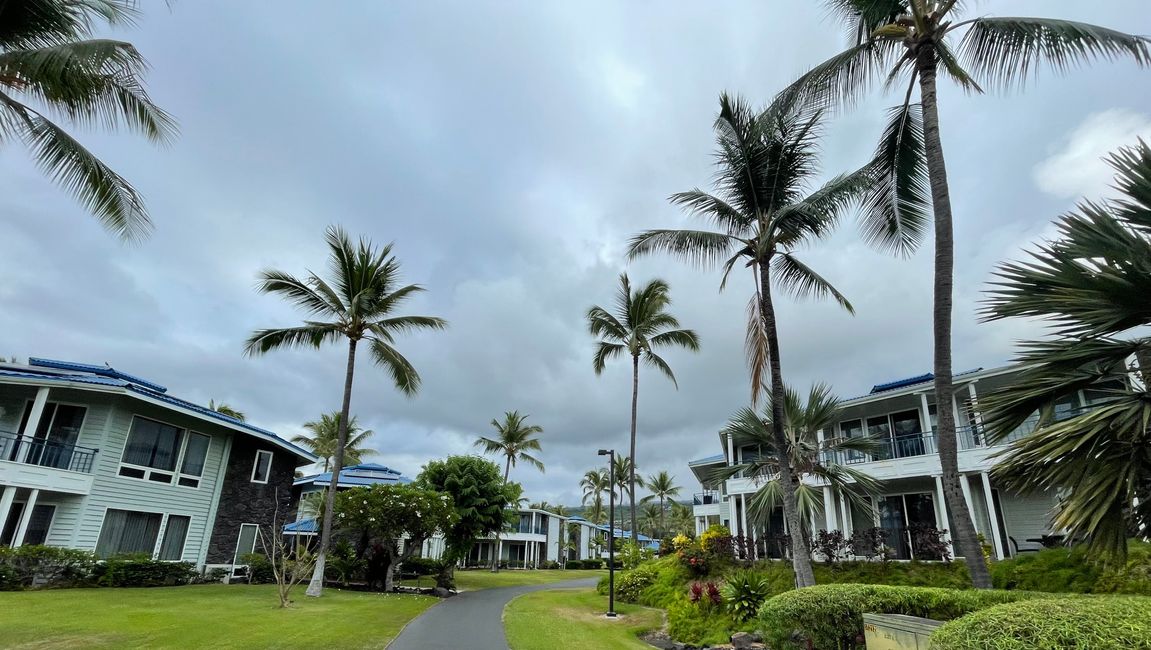
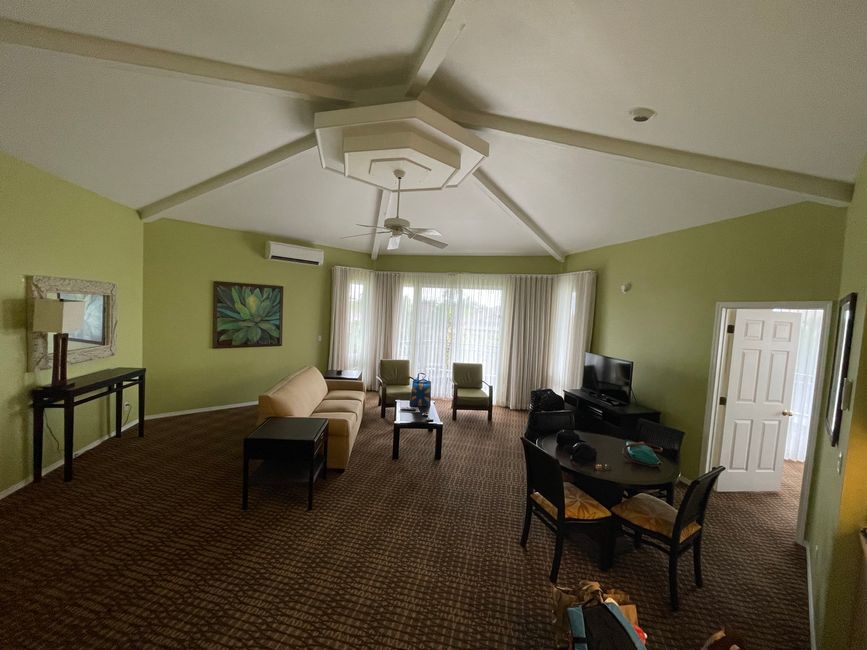
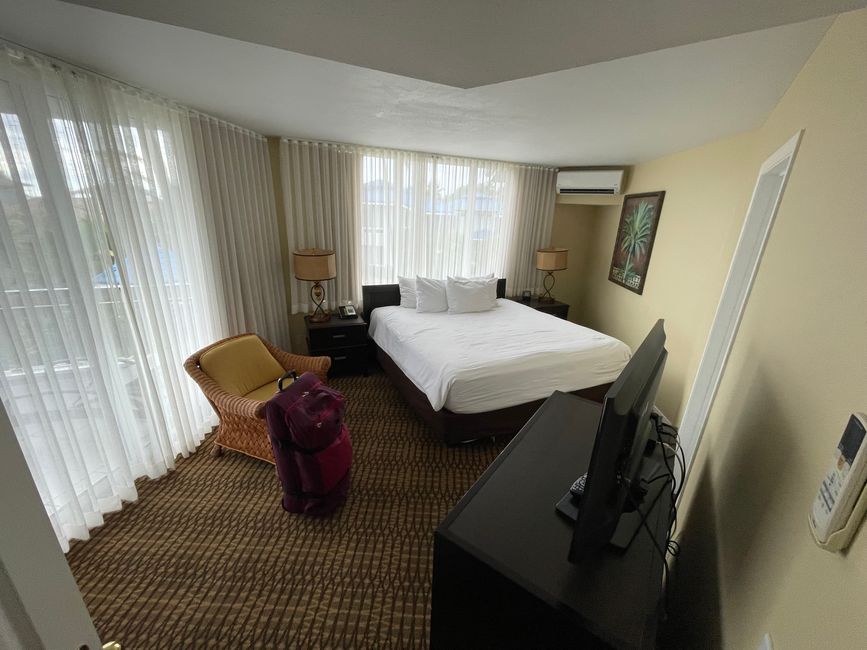
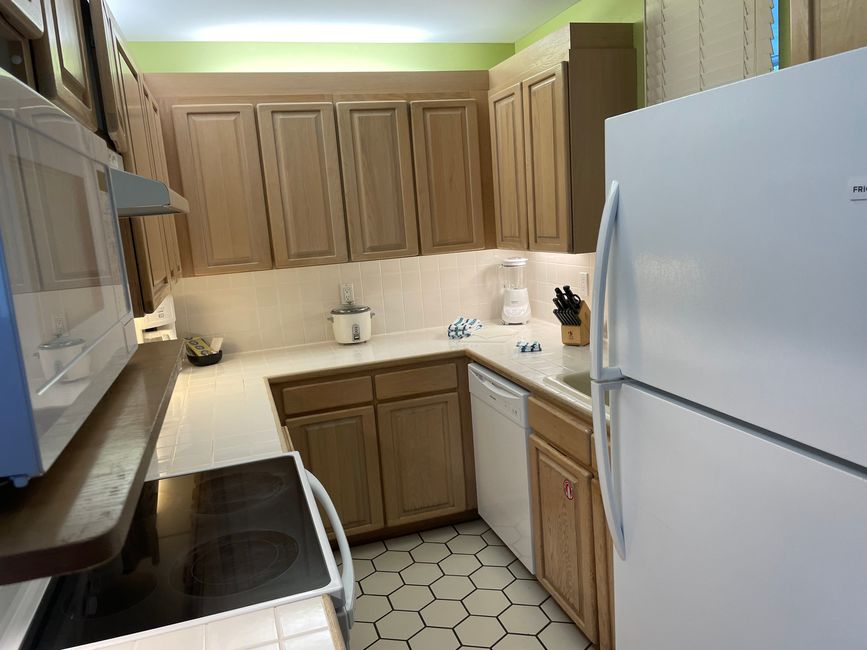
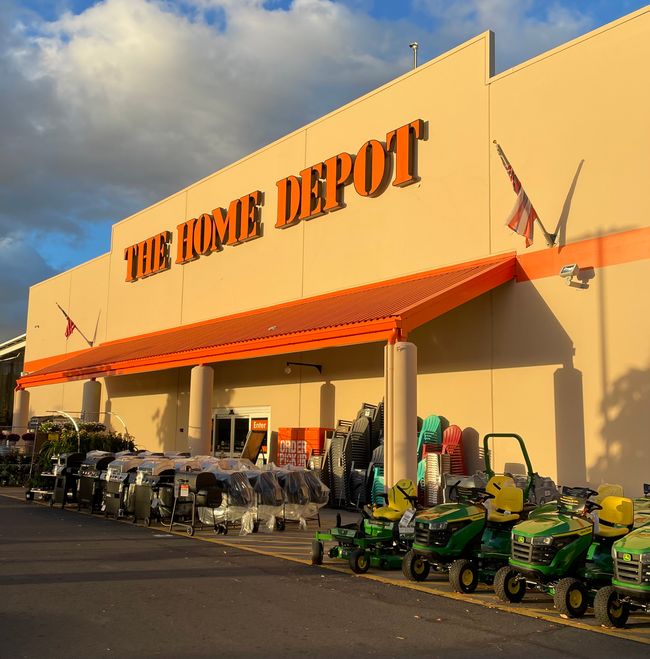
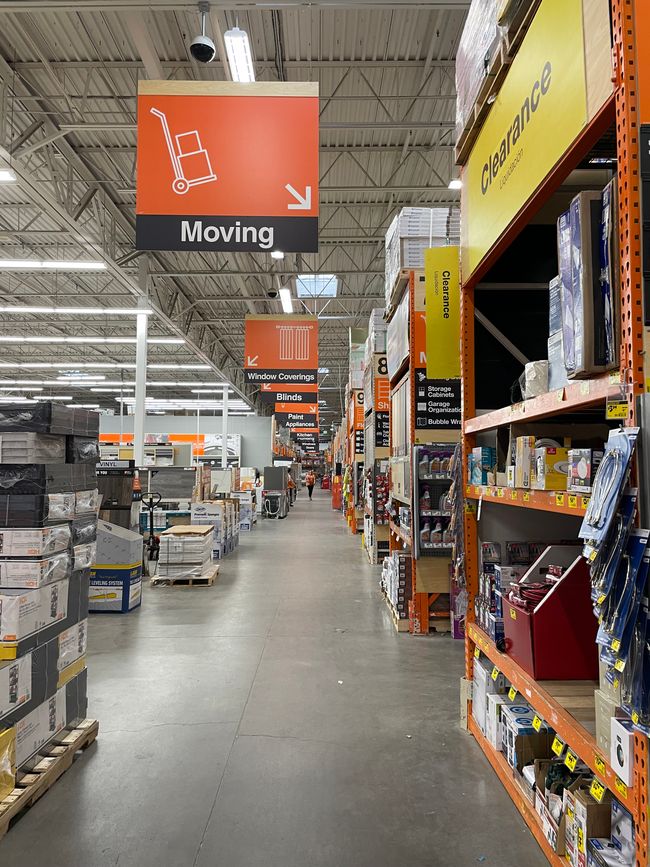
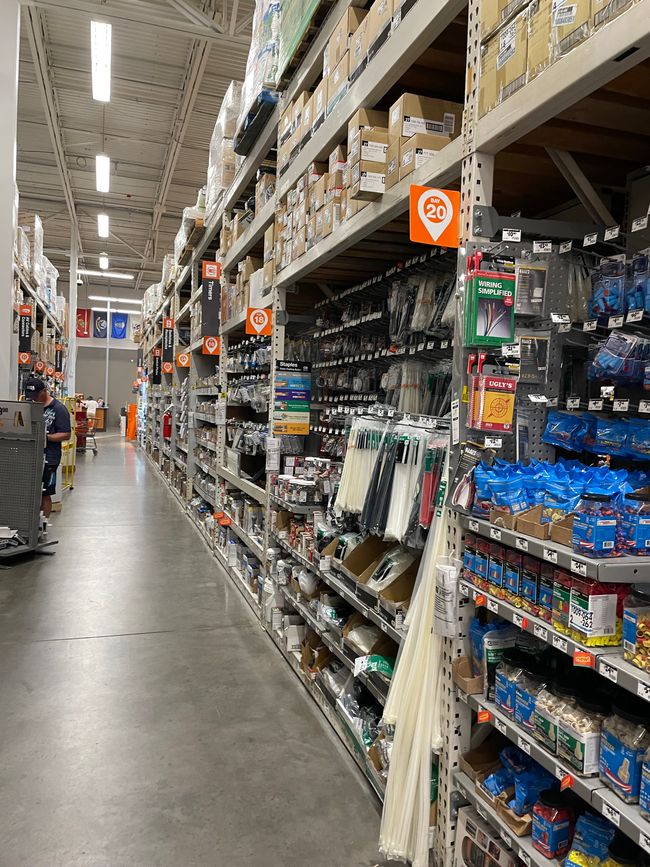
ସମ୍ବାଦପତ୍ରକୁ ସବସ୍କ୍ରାଇବ କରନ୍ତୁ |
Today we have to gather our rags and leave Punaluu for Kona, our last stop in Hawaii. Along the coast,

through lava fields,

through seemingly endless plantations of macadamia nuts.

Sun and showers are our constant companions.
facts
The macadamia nut is grown on over 20,000 hectares in the state of Hawaii, making it the largest producer of the delicious nut in the United States. The largest area (17000 ha) is on Big I. Two large nut processors claim much of the fertile growing area, but in recent years a growing number of independent growers and smaller producers have emerged. Brought to Big I on a commercial scale in the 1920s, the production reached the height of its Macnut mania in the '80s. Also supported by the commercials starring superstar John Hillerman (Higgins from the Magnum PI series starring Tom Selleck). Since then, the harvest has been a neck-and-neck race with Kona coffee, the island's most valuable agricultural export.
From a health perspective: The majority of the fats in nuts have a positive effect on the cardiovascular system and support healthy heart function. In addition, studies suggest that they lower total cholesterol levels and provide much-needed fiber.

We arrive at the National Historical Park Pu'uhonua O Honaunau

facts
Pu'uhonuas (refuges protected by the god of life, fertility, agriculture, rain, music and peace "Lono") was used by Hawaiians for several centuries until the end of the Kapu system in 1819. The rise of Christianity and the suppression of the Hawaiian religion caused the temples to be destroyed or fell into disrepair. The wall surrounding the Royal Grounds dates from the 16th century and the original Hale o Keawe Temple was built in the 17th century.

Other remains of heiaus (temples) on the site are thought to date from an earlier period.
In ancient Hawaii, the kapu system, a code of strict laws, formed the basis of Hawaiian society and culture. The Aliʻi, the ruling class of chiefs who migrated from Tahiti to Hawaii, were believed to have divine power or "mana" that gave them the right to govern society.
Many of the kapu laws were intended to control access to specific places, regulate the sustainable use of natural resources, and uphold social classes. Citizens were not allowed to look at an Ali'i and had to lie prone on the ground if he approached. Men and women were not allowed to eat together, and women were not allowed to eat certain foods symbolizing gods, such as bananas, coconuts, or pigs. Fishing during the spawning season was forbidden. The penalty for breaking the law was the death penalty. there were no prisons. The only way to avoid punishment was to reach the nearest Puʻuhonua. You were safe within the walls. After spending some time in the Puʻuhonua, they were pardoned by the kahuna (priest) and allowed to return home.



Actually, we also wanted to go to the Cook Monument, the place where Cook is said to have died, but we didn't feel like the 2 hour walk in the sultry heat.
facts
James Cook, a seafarer and explorer (you already know it from our 2018 trip to Australia and New Zealand) also discovers Hawaii. When Captain Cook went ashore on Big I, locals mistook him for the god Lono. Because by chance Cook anchored exactly in the bay, where the most sacred and greatest ceremony in honor of the god Lono was taking place. And according to the legends, the god looked like Cook and came with such ships. For 3 weeks his arrival was celebrated with a lavish party and Cook and his crew were showered with gifts. When Cook docked here again 9 days after his departure due to damage to his ship (due to a storm), the residents became suspicious. That couldn't be a god if wind and waves could harm him. Through the festival they had used up almost all of their supplies, some of which they now wanted to get back. A fight ensued.
How Cook died, whether he was killed or stabbed, is a matter of debate. The fact is, he is dead and was divided according to Hawaiian tradition at the time and distributed to the priests and chiefs. Some of the corpse parts, roasted in the earth oven and loosened from the bones, were sent to the white ships at anchor, which then mercilessly fired at the villages and temples with cannons. Cook's remains were given to his crew and he was laid to rest at sea.
We reach our new home for the next 4 days.

A real palace.



It's just stupid that you can't drive to the bungalow by car. You have to order a shuttle by phone, which then takes you, including luggage or shopping, to the accommodation with a golf cart.
Now quickly to the supermarket, because we've run out of water and steaks. And while looking for a souvenir we find a Hornbach - oh no, here it's called The home depot.



Isn't that cool?
We drove the Hwy (around town) on our way to the supermarket and both said we didn't like this place. Back then through the city, where life is raging, we were a bit jealous that we live so far outside. Well we make the best of it. We can grill steaks here. 😃😃😃
Our barbecue evening ends with us carrying our grilled food back in in the downpour and frying everything in the pan without having achieved anything (barbecue comes, for whatever reason, not up to temperature and another grill has no roof). 😩😩Schahaatz said the sausages would taste much better fried😋
ସମ୍ବାଦପତ୍ରକୁ ସବସ୍କ୍ରାଇବ କରନ୍ତୁ |
ଉତ୍ତର
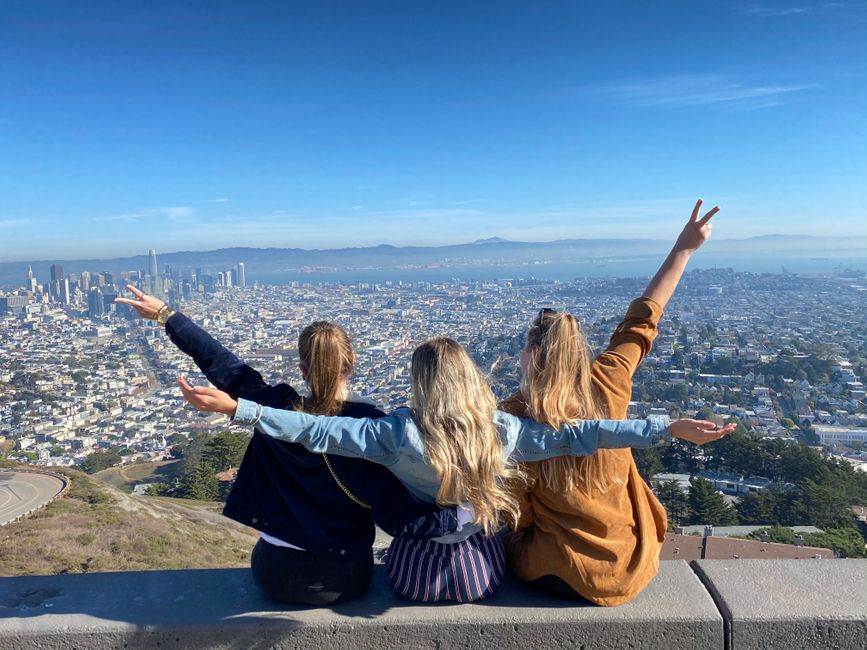
ଭ୍ରମଣ ରିପୋର୍ଟ ଯୁକ୍ତରାଷ୍ଟ୍ର
